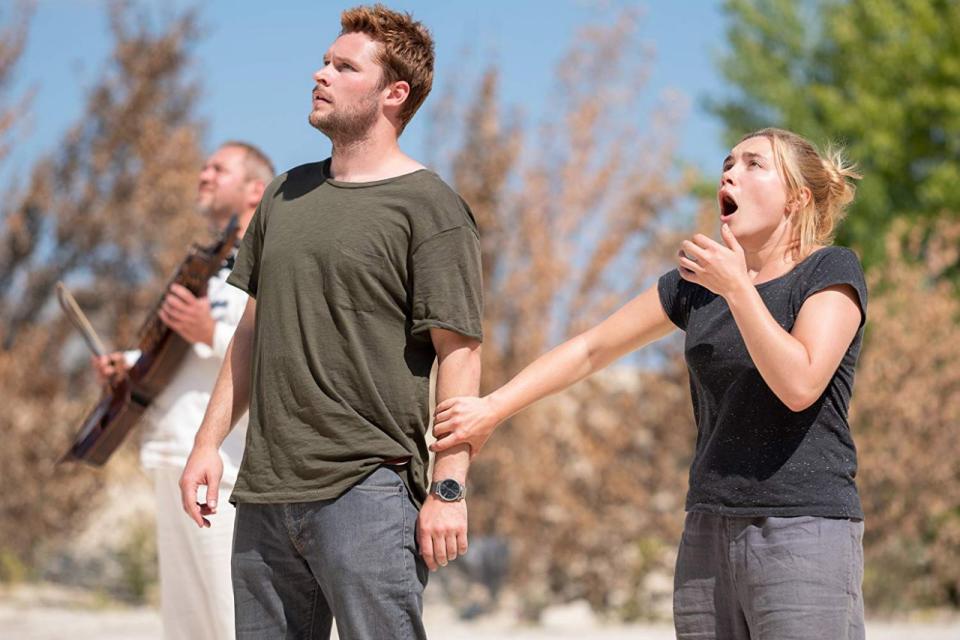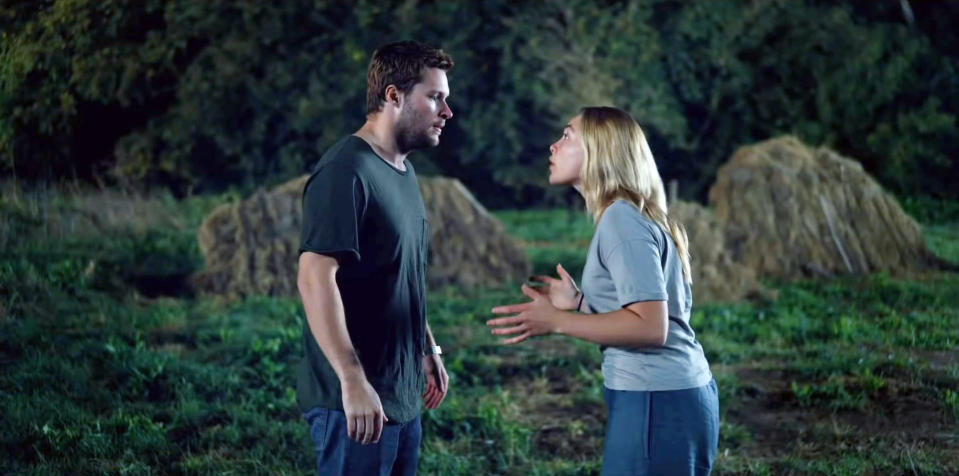Ari Aster shares the skull-crushing story behind the scariest moment in 'Midsommar' (spoilers)

Warning: This post contains big spoilers for Midsommar
Ari Aster knows that he’s got a peculiar hang-up about head trauma. One of the standout moments of the director’s breakthrough film, Hereditary, was the short, sharp shock of seeing a young girl’s cranium connect with a telephone pole at high velocity, and end up on the side of the road. It’s a violent turn of events that sends what had previously been a quietly unsettling domestic drama about one very dysfunctional family hurtling into full-on horror territory.
RELATED VIDEO: True Story Behind Festival Featured in 'Midsommar' Film
Aster’s newest film, Midsommar, undergoes a similar transformation from eerie to nightmarish following the cratering of someone’s skull. “I think that’s my sense of humor at play,” the filmmaker tells Yahoo Entertainment about these back-to-back instances of head-crushing gore. “There’s something very satisfying about blunt head trauma in movies! I’m sure there’s some childhood trauma that I’ve suppressed that’s just constantly finding its way into my work.” And with the critical and commercial success of Hereditary and Midsommar—which has become this summer’s cult horror movie of choice—it looks like Aster will be busting heads for years to come. “I have several scripts that feature brutal head obliteration,” he says, chuckling. “I don’t know what that says about me.”

The head obliteration in Midsommar is part of an extended sequence that fundamentally re-wires the characters’ brains, as well as our own. The movie’s first act transports a group of American grad students—including deeply unhappy couple, Dani (Florence Pugh) and Christian (Jack Reynor)—to a small commune in Sweden to observe their annual midsummer celebrations. Initially, the customs they observe seem odd, but not perilous: think vaguely sinister folk art, the imbibing of mind-altering drugs and unanticipated sleeping arrangements.
But then they’re invited to witness a ritual that drastically changes the tone of the event. Assembling with the other commune dwellers at the bottom of a tall cliff, they watch in horror as an elderly man and woman walk out to the edge of the rocks and happily leap to their deaths. While the woman dies instantly on contact with the ground, her companion needs some extra help. So out comes an oversized cudgel, and down it comes on his head. Again and again…and again.

Aster can’t and doesn’t try to take credit for dreaming up this unnerving ceremony. Like a number of other scenes in Midsommar, it’s based directly on Swedish folklore, specifically a ritual known as ?ttestupa. As legend goes, these cliffs — or ?ttestupas — were sites where elders would willingly commit suicide once they were no longer capable of contributing to their communities.
“Who knows whether it actually happened, but it’s understood amongst Swedes as a folktale of what used to be done,” Aster explains. “And the cudgel that they use to put the man out of his misery is also part of Swedish folklore. When elders reached a certain age, the family would band together and bludgeon the elder member of the family to death, which for me is just a funny idea.”
Naturally, no human heads were harmed in the making of that skull-crushing sequence. Neither did Aster resort to digital bloodshed, relying instead on the prosthetics favored by the generation of directors he grew up watching, like David Cronenberg and David Lynch. “I’m a big fan of body horror—you just don’t want to be gratuitous. Although, again, sometimes the humor comes from moments that you could call gratuitous, where you’re going one step beyond where people think you’ll go. So much of the film is aiming to be elegant, so there’s fun to be had in suddenly giving into your baser impulses.”
Besides fulfilling Aster’s head trauma quotient, the ?ttestupa scene sends a clear signal to the audience that this particular study abroad trip isn’t going to end well for our pupils. At a certain level, Dani, Christian and their friends must realize that too, which makes their decision to stick around an expulsion-worthy offense. Onscreen, at least, their defense for not immediately hightailing it to the nearest train station is that they’re trying to be tolerant of another culture — a rationale that inspired big laughs at the screening Yahoo Entertainment attended.
And that’s the reaction Aster says he intended to provoke. “That’s where my sense of humor comes in again: you have these opportunistic anthropology students who see this horrible thing, and it only gets them more excited because they can make it into their thesis. And there’s nothing funnier than people competing for a thesis, because there’s nothing that more reflects the meaningless of life.”

But there’s another, darker reason why Dani hangs around the commune beyond our own amusement. Witnessing the ?ttestupa forces her to directly confront still-painful trauma of losing her entire family in a murder-suicide, a tragedy that Christian hasn’t exactly helped her through. And speaking of her increasingly toxic relationship, being present for this ritual sets her on a path towards becoming an active participant in the climactic ceremony that seals her boyfriend’s fate.
“She’s forced into a confrontation with something that she’s really been trying to avoid,” Aster says of how the ?ttestupa becomes a transformative experience for his heroine. “If you’re looking at the scene from the perspective of Christian and his friends, this is the first brick in the wall leading to their demise. But from Dani’s perspective, it’s the first brick in the wall of finding her new self and liberating herself from all the things that came before. She sees a whole community of people reacting to [death] in a way that is absolutely alien to her, but also in a way that might also provide a seed of change in her mind. Or maybe it’s the first brick in the wall of her going mad! ” Okay...now he’s just making our own head hurt.
Midsommar is playing in theaters now; visit Fandango or Atom Tickets for showtime and ticket information
Read more from Yahoo Entertainment


 Yahoo Home
Yahoo Home 
